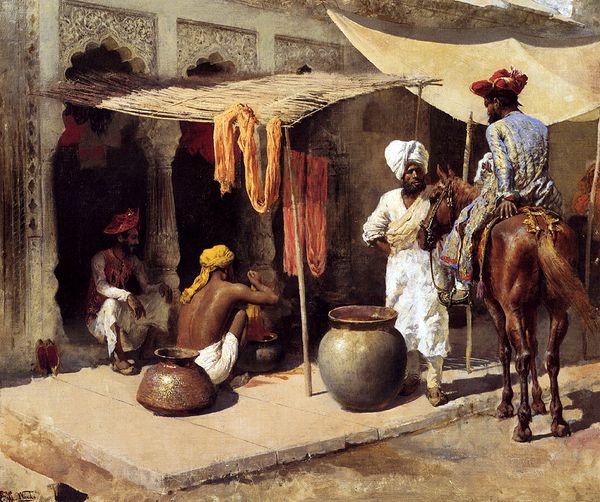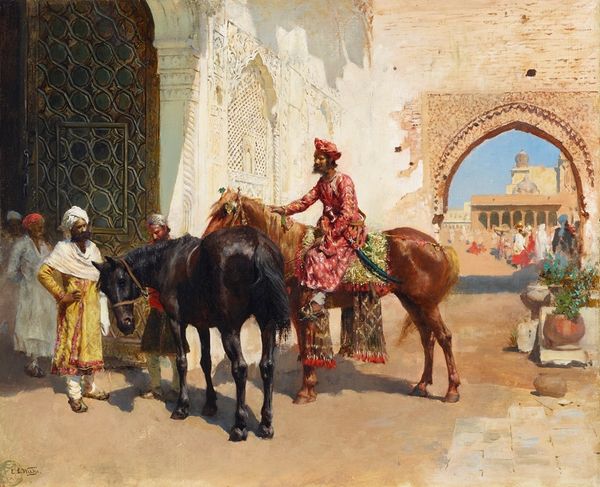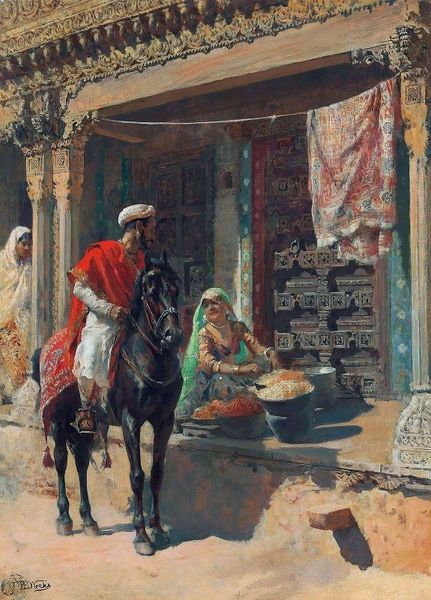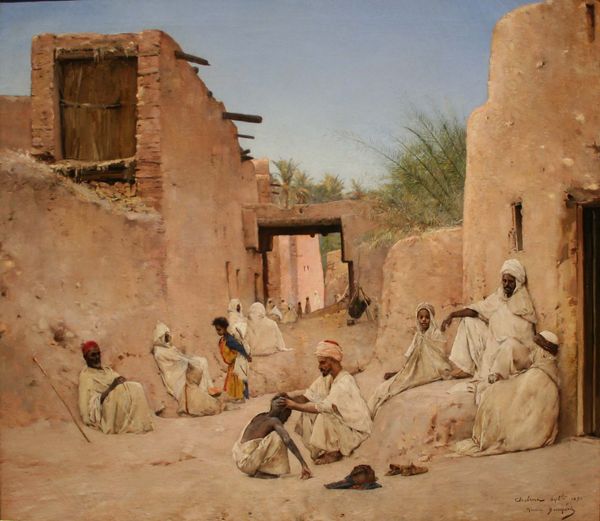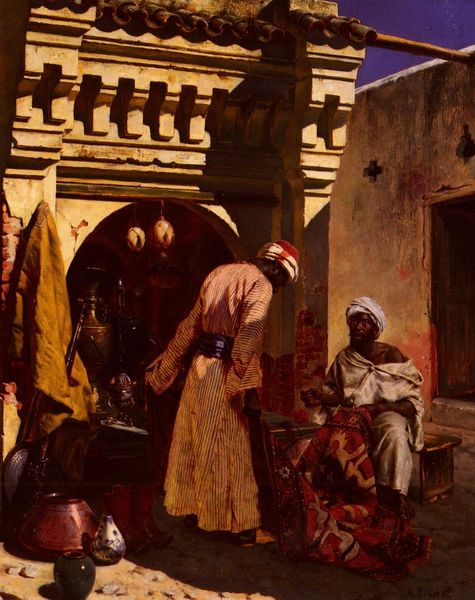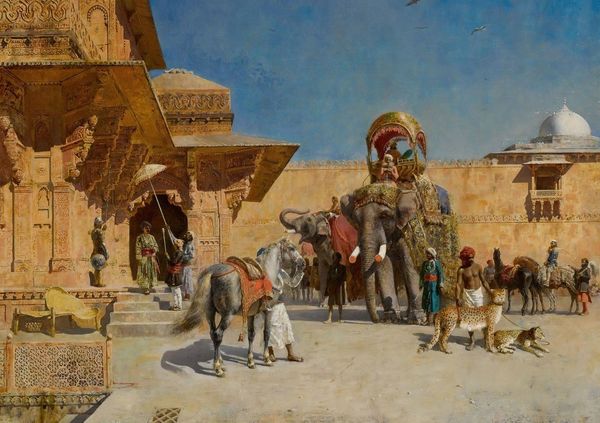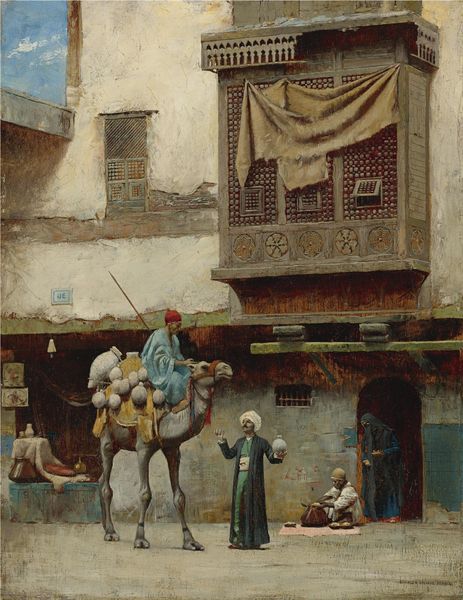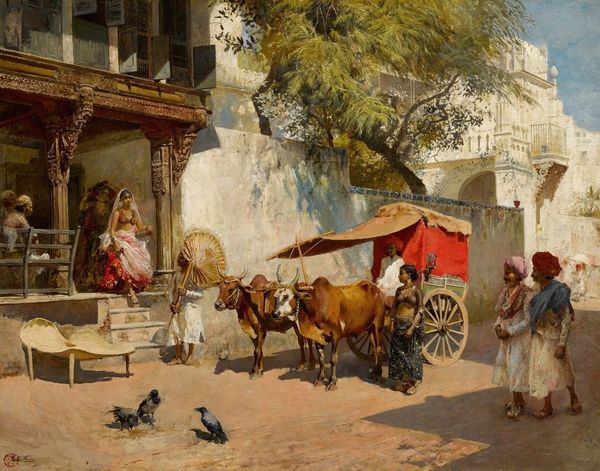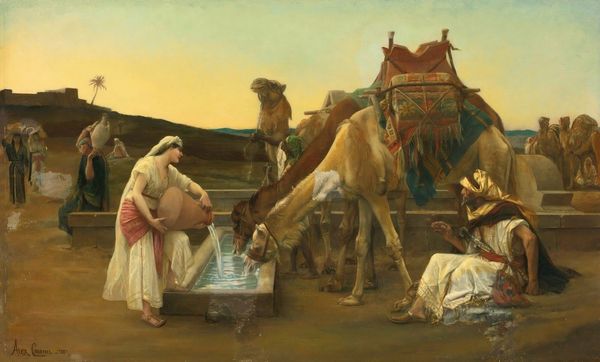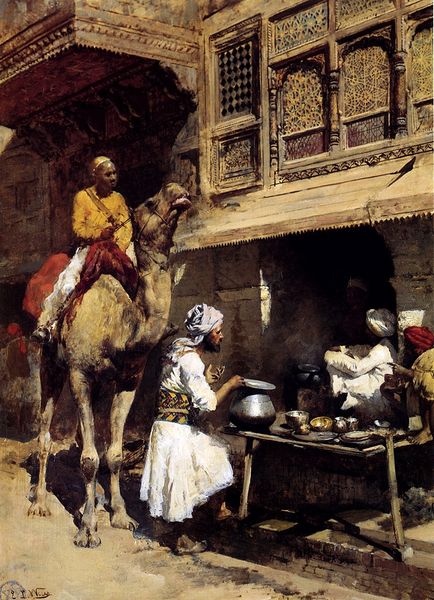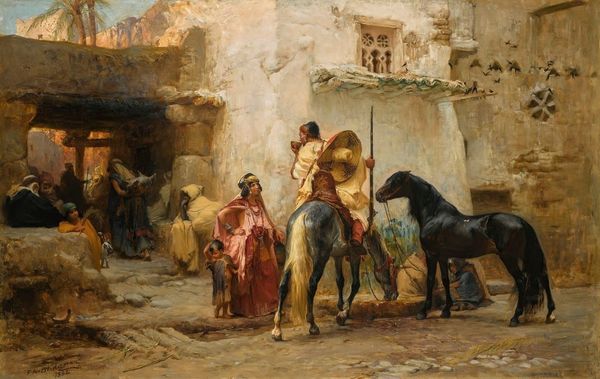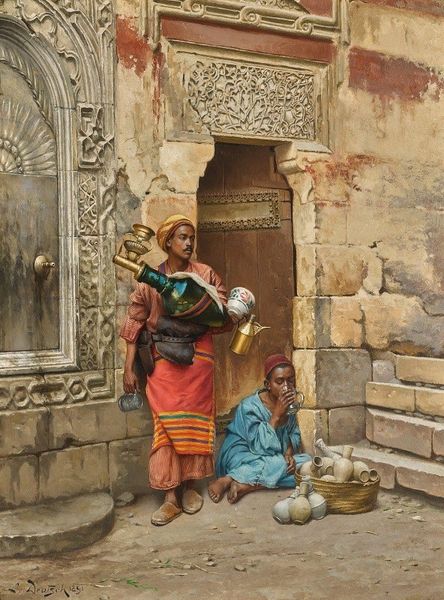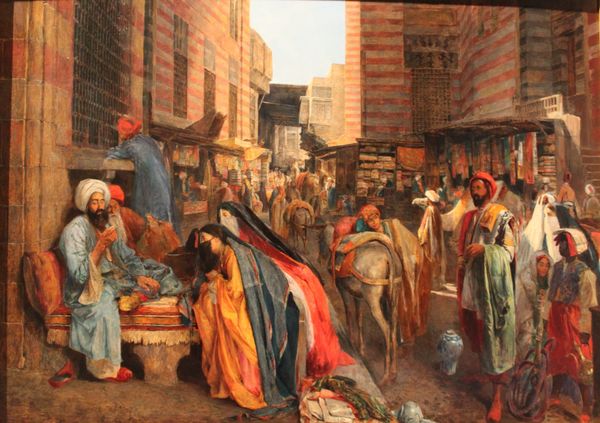
oil-paint
#
portrait
#
animal
#
impressionism
#
oil-paint
#
oil painting
#
group-portraits
#
orientalism
#
horse
#
genre-painting
#
street
#
building
Dimensions: 60.5 x 74 cm
Copyright: Public domain
Curator: Let's discuss Edwin Lord Weeks's "A Street Market Scene, India," painted in 1887 using oil on canvas. What is your initial reaction to it? Editor: Immediately, I'm struck by the layering of labor. There are the vendors, the potter's wares meticulously stacked, a figure on horseback, and even the handlers guiding the animal. All of this captured with incredible detail, showcasing the daily activity and its orchestration within the marketplace. Curator: Indeed, the orchestration of pictorial elements is quite compelling. Notice the strong diagonal created by the building's structure, subtly guiding our eye from left to right, encountering various groups and vignettes. The color palette, while restrained, is used strategically to highlight certain areas of interest. Editor: Precisely. And the materiality of those pigments reinforces a narrative. Weeks isn't just capturing the light; he's revealing the grit of the location, perhaps subtly critiquing a romanticized vision of the East often associated with orientalist painters of the period. Look at how the buildings seem aged, and the texture on the street, so palpably evoked. Curator: It is evident that Weeks focuses on representing the texture, with the interplay of light and shadow serving as a powerful tool for emphasizing form and structure, even lending a sense of monumentality to mundane objects. Think about the potters array on the stone platform. They acquire a symbolic quality. Editor: Symbolic of commerce and industry, yes, but I read them also as tangible outcomes of collective labour practices—whose effort makes them, how and to whom they are finally sold. And this is contextualised through an orientalist gaze. We shouldn’t ignore how Western European and American art depicted “the Orient” through carefully chosen, exploitative frameworks. How might this shape our reading? Curator: While the "orientalist" critique is certainly a lens we can and perhaps should apply, I'd still urge we don’t simply dismiss the piece's formal merit in its carefully balanced composition and its almost photographic-realism quality. Ultimately these artistic approaches shape our reading as well. Editor: A productive impasse, I think. So much hinges, as always, on what—or whom—we choose to centre.
